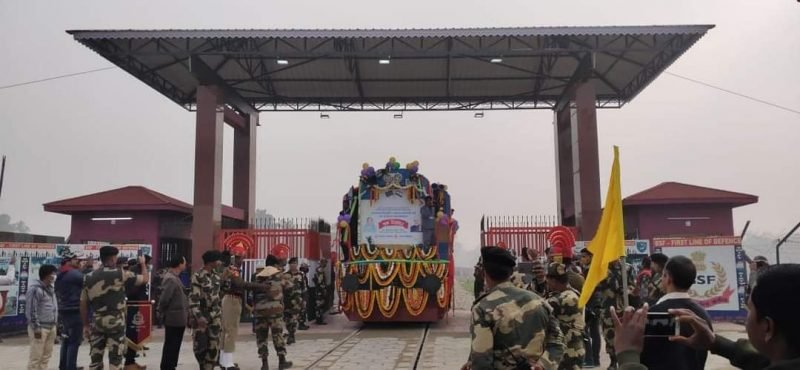India and Bangladesh strengthen their ties over New Railway Project

After the enactment of CAA and fur over its implementation, relations between Bangladesh and India turned hostile. The inception of National Register of Citizens (NRC) has fueled the apprehension and fear of forthcoming mass departure of Bengali speaking people from Assam to Bangladesh. This came to be more upsetting to the Hasina government after the offensive statements made by Indian Home minister Amit Shah equating Bangladeshi migrants to ‘termites‘. Thus, this situation has dogged the bilateral relations and incited considerable disquiet in Dhaka. After the virtual summit happened last year, the Indian government accepted Bangladesh as ‘vital’ to India’s Neighborhood Policy. The meeting was promising and healing the previous wounds, both the countries seemed to move back to their cordial relationship.
India and Bangladesh planned to extend their ties by launching a new railway line project stretched across 10.5 kilometres, from Haldibari in the eastern Indian state of West Bengal to Chilahati in Bangladesh. This overland transborder railway project was at a standstill when the India- Pakistan war broke out in 1965. At the end of this phase, transborder relations continued adversely. It was only after the formation of Awami League in Bangladesh, 1966 that relations between both the countries began to improve gradually. Both the nations agreed to expand their trade and transport facilities through a broad network of roads and railways. The first major step taken in this direction was in 1999, to provide bus service linking Kolkata and Dhaka. Another step taken was to introduce a railway line between Dhaka and Kolkata. It smoothened the way for more development, under which Maitri (Friendship) Express, first fast track railway line was introduced. Also, other significant railway lines connecting different areas of both countries have been restored.
The Haldibari- Chilahati railway is the recent transborder connection to Bangladesh from Assam and West Bengal. It will make stronger the rail networks access to the main ports, dry ports, and land borders to facilitate the growth in local trade, advancing the social and economic development of the region. Common people, merchants and capitalists of both the countries will be able el to obtain more benefits of both goods and passenger train facilities, once all trains are set for operation on the track. This will also strengthen the tourism industry, people from Bangladesh will be able to visit tourist attractions such as Sikkim, Darjeeling and Doors in India. This new project will hopefully warm the ties between the two countries, however much more than establishing road and rail networks are required to strengthen popular contact between India and Bangladesh.


















